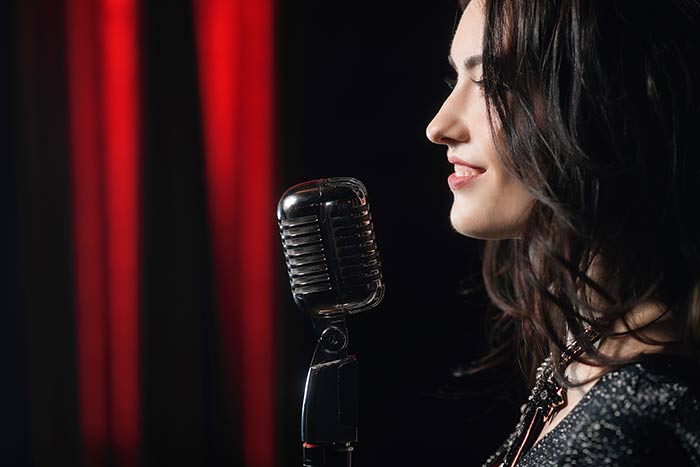You may associate pop music with that polished, bubble gum sound, but it’s actually a combination of genres and influences that are popular at any given time. They are then presented in an accessible, easily digestible pop format and song structure that is enjoyed by a large portion of the public.
Pop is constantly evolving, building on and blending together influences through different eras, while also reflecting the social and political situation. In this article, we attempt to show a pop music history timeline in the west, including some pivotal changes. Keep in mind, however, that there are many artists that shaped the course of popular music and we will be showing overarching trends and highlights that brought us to where we are today.
The origins of pop music
During the mid to late 19th century, many households gathered around the pianos in their homes and enjoyed hearing members of their family play music. This is where we can trace the beginnings to pop music as we know it. To meet the demand for sheet music, the publishing industry was established. They were looking for popular artists and printed their music for sale, making it available for other musicians to perform. In the early 1900s, when the phonograph was introduced, this evolved to listening to recorded performances, kickstarting physical sales of music.
1920s – 1940s: the birth of Jazz, Blues and R&B
The first notable era of our pop music history timeline was characterised by jazz. Up until the 1920s, the western population had enjoyed classical music, church hymns and ballads, so jazz really introduced something new to the scene, while shocking the audiences. Its undeniable influence has been adapted by other genres that followed like blues, r&b and hip hop. Blues evolved from jazz, laying meaningful foundation for rock’n’roll.
1950s – 1960s: Rock ’n’ Roll takes over
In the 1950s, pop musicians started to take influences from jazz and blues and the unique blend of genres birthed one of the most important revolutions in pop music history. Researchers from Queen Mary University of London and Imperial College London noted that by early 1960s, dominant seventh chords, typically found in jazz and blues started to die out. Instead, more of a rocky sound was adapted by musicians, pioneered by the likes of Ike Turner and Muddy Waters and then accelerated by bands like The Beatles and Rolling Stones, causing the so-called ‘British Invasion’ in North America. Other notable artists of this era included The Who, Elvis Presley and Led Zeppelin. It’s important to note, that while British bands of this time were instrumental in popularising the rock’n’roll genre, the trend towards rock music actually originated before them. Another crucial development in the 1960s was the accessibility of a portable radio, enabling music lovers to travel with their favourite tunes, which made picking up different influences much easier.
1970s – 1980s: Funk, Disco and Stadium Rock
Funk evolved during the mid 1960s and was popularised throughout the 1970s. Prominent artists include James Brown, Stevie Wonder, Kool & The Gang and Earth, Wind and Fire. Funk was accompanied by protest movements and here, again, we can pick up influences of soul, jazz and R&B. The use of minor 7th chords became popular and it hasn’t been eliminated since. 1970s were also defined by pop rock artists like Elton John and Queen. With the advancement in music technology and digital recordings, another wave of revolution of pop music was born. Synthesisers, samplers and digital drums were available, paving the way for genres like disco, electro, techno and house. Digital equipment was used heavily in pop music and artists like Michael Jackson and Prince defined the genres at this time. Meanwhile, rock took on a different form with glam rock, hair metal and stadium rock, featuring the likes of KISS, Bon Jovi and Bruce Springsteen. Interestingly, researchers have found that the popularity of arena rock coincided with a lack of diversity in pop music. That, of course, was set to change with early introduction of hip hop in the 1980s.
1990 – 2000s: Hip Hop, Pop and Grunge
Hip Hop introduced the third and the most influential revolution of pop music since rock’n’roll and digital instruments. Mainstream companies and record labels didn’t want to welcome rap and hip hop onto the scene, but once the wider public caught onto the movement, it was clear – hip hop is here to stay. According to scientific research, it truly revolutionised the pop music genre. For the first time, harmony wasn’t the main characteristic of popular music, in fact, hip hop uses smaller amounts of harmony and puts emphasis on rhythm and speech. Meanwhile, other, existing genres of music also experienced a shift in the 1990s. Grunge and punk bands rose to prominence, overshadowing the popularity of stadium rock, changing the game for rock musicians. Pop bands and artists such as Spice Girls and, later, Britney Spears, S Club 7 and Backstreet Boys became a sensation among teen audiences, defining the trend of boy bands and girl bands. As we enter 2000s, these influences are still present. More commercial, pop-sounding rock and punk rock is popularised by bands like Simple Plan, Blink 182 and Fall Out Boy. The popularity of rap and hip hop shows no signs of slowing down with artists like Eminem, Jay Z, 50 Cent, Missy Elliott and many more dominating the charts. As always, there were musicians taking influence from different genres like Linkin Park and Limp Bizkit who blended rap and rock together.
Popular music today
As evidenced in our pop music history timeline, popular music is ever-evolving. This is thanks to innovation in technology and the creativity of musicians, taking influences from many different genres and putting their own spin on them. The music we listen to, throughout history, also represents political and social issues at the time. As we close the 2nd decade of 2000s, we can still see the influence of hip hop, r&b and soul, as well as electronic music dominating the charts. Although many predicted rock and guitar music to die out, there are still plenty of artists that have adapted this genre and keep reaping the rewards. If chart music isn’t your cup of tea, this is the best time in history to explore many different artists and genres. Today, more people than ever, have access to endless libraries of music and, while pop music is still highlighting overarching trends, we can now find musicians that we want to listen to that fit outside of the constraints of pop music. These artists are also able to find their audience and build a platform, without getting their music into top 40, which is really empowering for musicians and listeners. Many of us also have access to making music from home, with very little equipment, which means more people are able to innovate, experiment and release music than at any other given time in history.
Tags: Evolution of popular music







